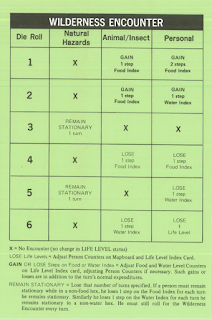The thing that makes such imaginations interesting is their translation into commonplace terms and a rigid exclusion of other marvels from the story. Then it becomes human. How would you feel and what might not happen to you, is the typical question, if for instance pigs could fly and one came rocketing over a hedge at you? How would you feel and what might not happen to you if suddenly you were changed into an ass and couldn't tell anyone about it? Or if you suddenly became invisible? But no one would think twice about the answer if hedges and houses began to fly, or if people changed into lions, tigers, cats, and dogs left and right, or if anyone could vanish anyhow. Nothing remains interesting if anything can happen.
I agree with Wells here, and I think that this is a very fine expression of one of the several disagreements I have with conventional D&D criticism, to wit, that appealing to "realism" has no place in our assessments. Almost surely we've all heard several arguments like this: "You want a mechanic for realistic [weapons/bows/armor/movement/mounts/encumbrance/rations/falling/swimming/boating]? But there is no place for realism in a game with wizards and fire-breathing dragons!"
As Wells points out, not everything can be fantastical and surprising and wahoo, because then the whole work collapses into indistinguishable, unapproachable mush. In our case of the fantasy D&D campaign, of course, we are certainly able to support somewhat more of an eclectic combination of elements than Wells could in the course of a single story. That's fine. But our players need some guidelines and parameters for how things work -- they can't make any valuable strategic choices if the DM is prone to springing crazy nonsense about everything, all the time.
And particularly for the new player (who is, in fact, most people), an excellent methodology is this: Give them a ground-state field of "normal medieval society", and how things generally work physically, technologically, and socially in the real world, and start building fantastical elements a bit at a time from there. This provides a very rich set of shared expectations and intuitions quickly, without reading tomes of background text to get into the milieu. Play can start immediately, and their instincts for how a sword, water, door, rope, horse, torch, mirror, spike, or tree work admirably, assuming a reasonable DM who is attentive, observant, and fair about things like that.
In old-school D&D we can give the new player a low-level fighter, who is mundane in practically all ways, maybe skip telling them anything about the rules at all, and just ask them to role-play honestly with the physical equipment with which they start. It works out perfectly fine and much of the time that player will be more creative than the person accustomed to working with lists of skills and feats. Notice that their tools principally come from the standard equipment list, which in Original D&D had no explanatory text of any kind associated with them (players were expected to be generally aware of the world around them and medieval-level technology).
Of course, realism can't be everything; as per the golden rule, it's balanced against playability of the game. But personally I see no reason why not to "dial in" the ground state rules of things like mundane combat, movement, archery, encumbrance, foodstuffs, riding, swimming, falling, etc., and I wholeheartedly support "realism" as a legitimate point of discussion in that part of the game design. In fact, frequently it serves to discover the most elegant rule. If someone says "it doesn't matter", then having a correct rule shouldn't trouble them any more than having an incorrect rule. Whereas if someone were to argue that a more-mangled base reality is always better in a fantastical game ("because dragons"), then it runs up against Wells' observation here: Then nothing remains interesting, and nothing is coherent to the part-time player.
(Hat tip for the quote: B.J. Johnson).












